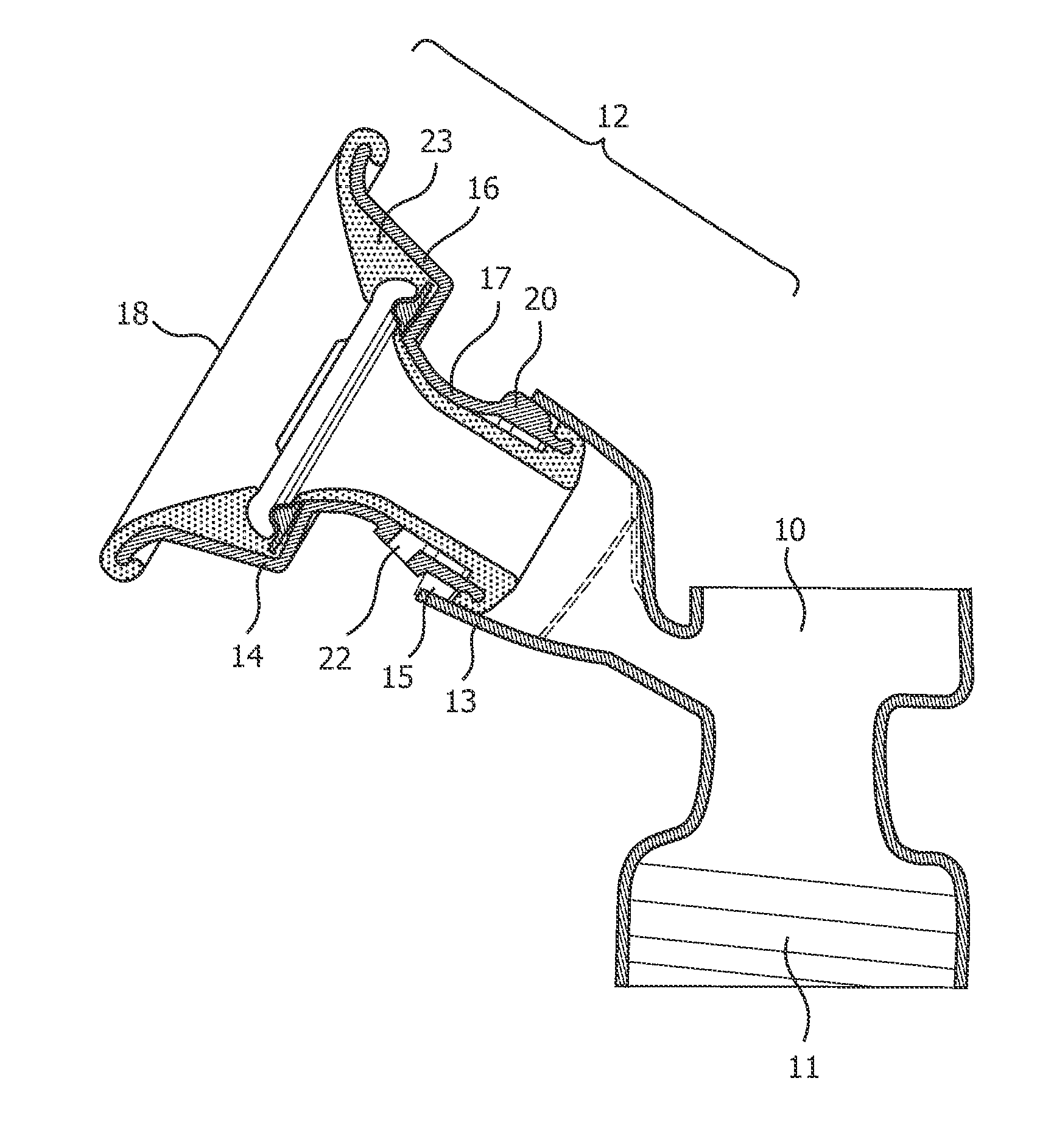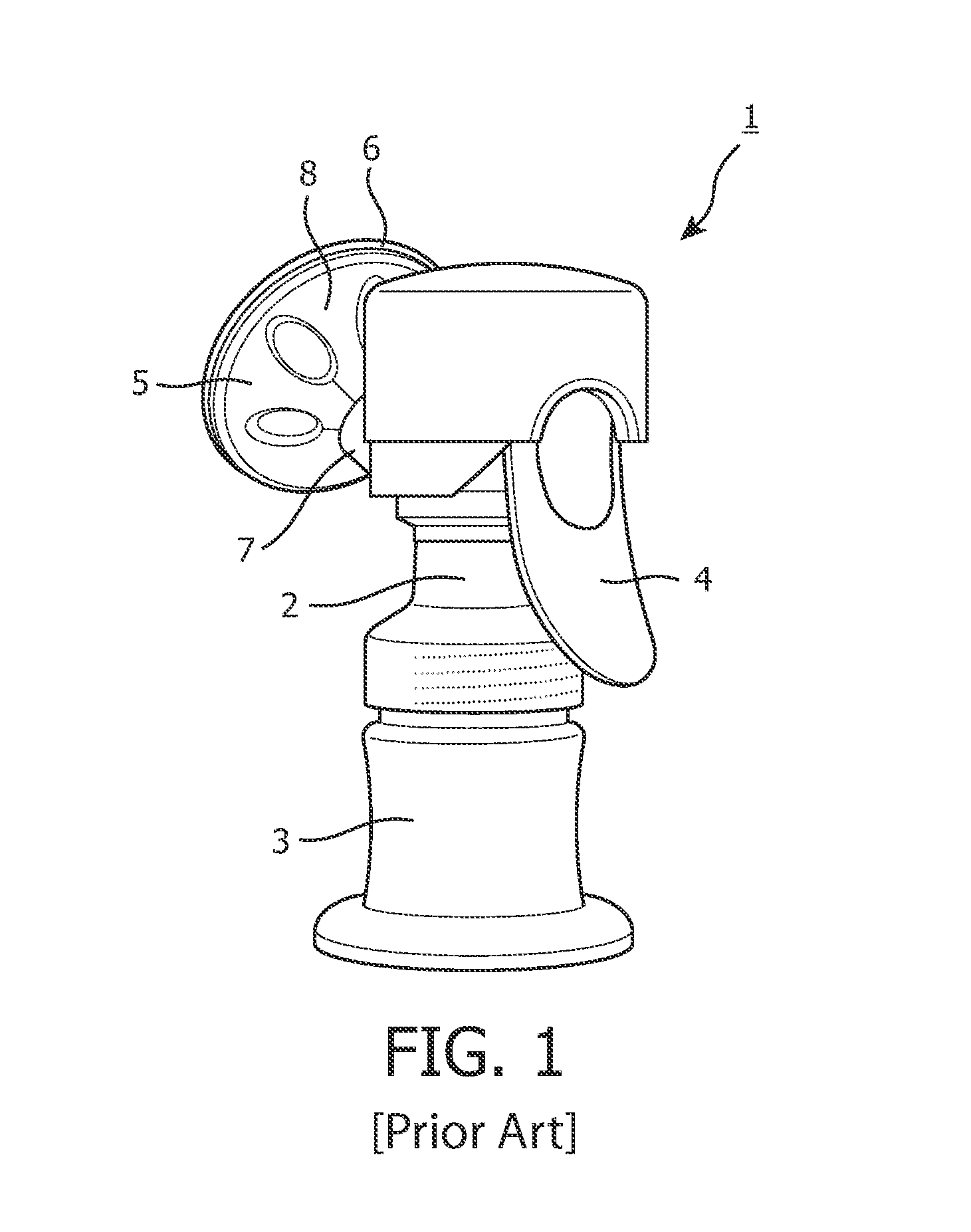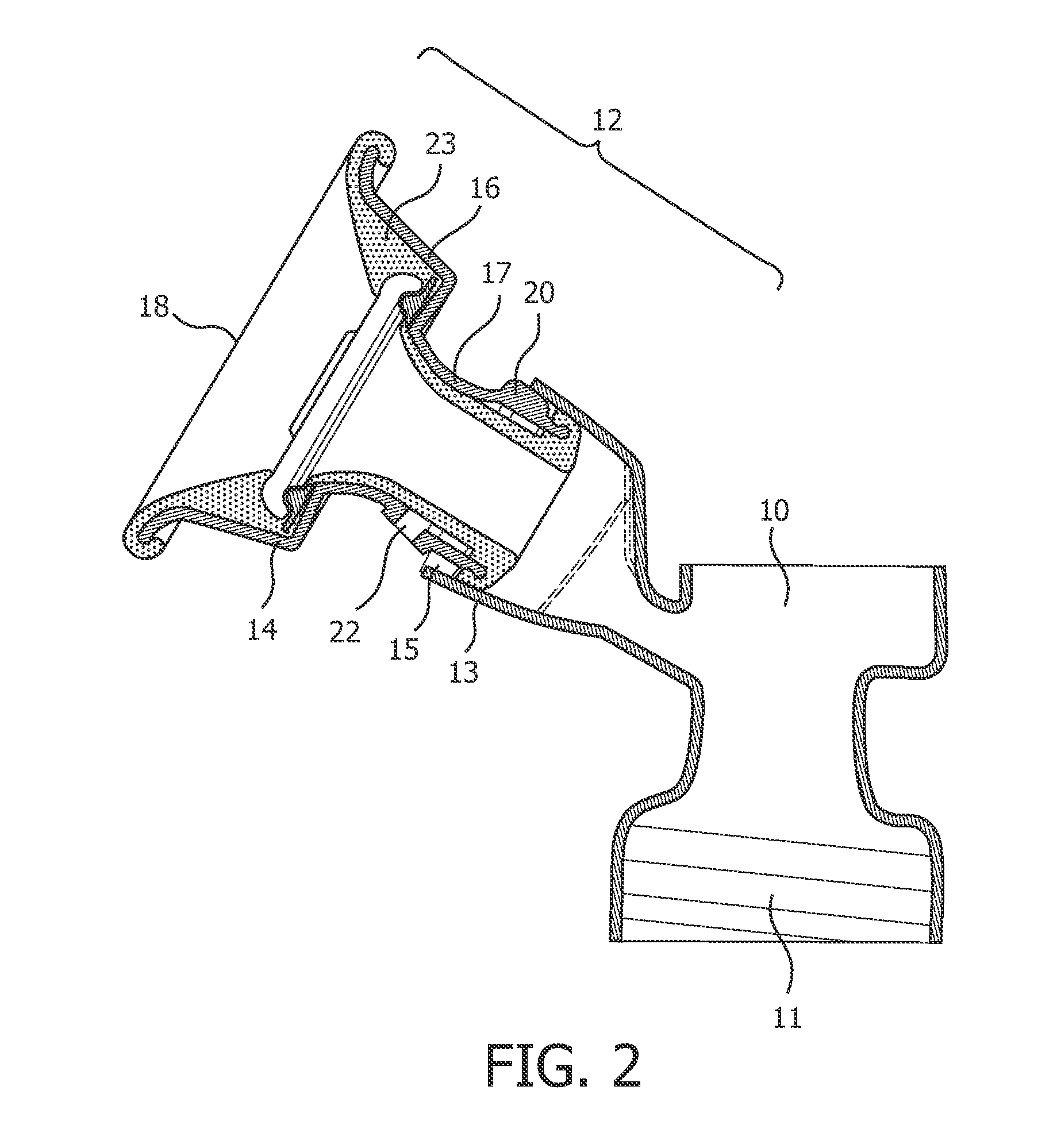Insert for a breast pump
a breast pump and inserting technology, applied in the field of inserting for a breast pump, can solve the problems of complex construction, uncomfortable and inefficient extraction of milk, and inability to provide natural action, so as to reduce the pressure differential, and reduce the perception of vacuum level
- Summary
- Abstract
- Description
- Claims
- Application Information
AI Technical Summary
Benefits of technology
Problems solved by technology
Method used
Image
Examples
Embodiment Construction
[0037]Referring now to the drawings, in particular FIGS. 2 and 3, a breast pump unit is shown comprising a main body 10 and a milk-receiving vessel (not shown). The milk receiving vessel, which may take the form of a feeding bottle for an infant or baby, is attached to the main body 10 by a screw fitting 11, although it will be understood that alternative releasable attachment means may be used, such as clips (not shown).
[0038]A vacuum pump unit (not shown) is disposed in the main body 10, to create a vacuum, as will be described hereinafter and a handle (not shown) extends from the main body 10. The vacuum pump unit (not shown) is motorized and the handle operates a motorized vacuum pump unit (not shown) which is powered by batteries disposed in the main body 10. Alternatively, the handle is manually operable to operate the vacuum pump unit. The vacuum pump unit (not shown) is conventional and so no further description of the pump unit will be given here.
[0039]A breast receiving fu...
PUM
 Login to View More
Login to View More Abstract
Description
Claims
Application Information
 Login to View More
Login to View More - R&D
- Intellectual Property
- Life Sciences
- Materials
- Tech Scout
- Unparalleled Data Quality
- Higher Quality Content
- 60% Fewer Hallucinations
Browse by: Latest US Patents, China's latest patents, Technical Efficacy Thesaurus, Application Domain, Technology Topic, Popular Technical Reports.
© 2025 PatSnap. All rights reserved.Legal|Privacy policy|Modern Slavery Act Transparency Statement|Sitemap|About US| Contact US: help@patsnap.com



